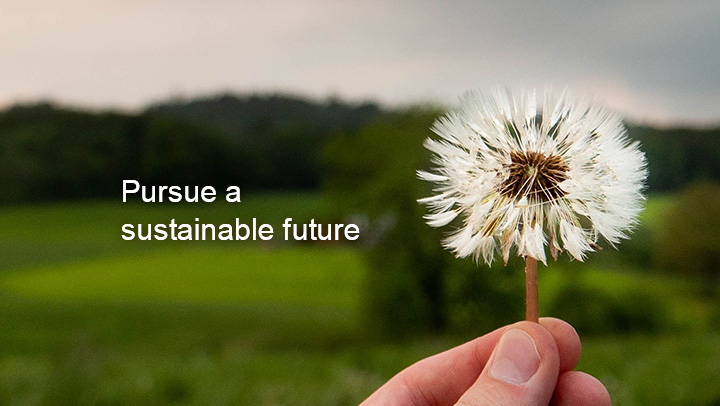⑴ Supplementary planning and construction of production facilities. Coke Oven Machinery & Vehicle Co., Ltd., Metallurgical Equipment Manufacture Co., Ltd., Special Spare Parts Manufacture Co., Ltd. and other business units in Lvshun base that have no planned paint booths shall plan and build paint booths that meet the environmental protection standards in appropriate areas of the plant according to product composition, to reduce disorderly discharge of organic waste gas.
⑵ Rebuild the existing production facilities. Units in Quanshui Base, Crane Co., Ltd. in Lvshun Base and General Gear Reducer Plant in Zhongge Base shall plan or build paint booths and paint mixing booths that meet the environmental protection standards to solve the bottleneck problem that the existing facilities and places for coating work cannot match with the ever-increasing production capacity, meanwhile, to minimize the disorderly discharge of organic waste gas caused by unprotected coating operations.
⑶ Promote project implementation and increase production capacity. Construct new sand processing shop for the Foundry Co., Ltd. After the new shop is put into use, it can effectively solve the bottleneck problem of insufficient sand processing capacity, increase overall production capacity and significantly reduce smoke and dust emission in some key processes.
⑷ Promote welding fume control at the pilot units. Organize relevant production and business units involved in welding fumes to conduct comprehensive demonstrations and formulate feasible welding fumes control plans regarding dust removal effect, heat preservation in winter, energy consumption, follow-up maintenance costs, etc. and make pilot implementation, to gradually reduce the disorderly discharge of welding fumes.
⑴ Carry out lightweight product design. Develop lightweight product through lean calculation procedures, mechanism optimization technology, etc. to reduce product weight, so as to reduce the amount and types of materials used. In addition, intelligent manufacturing methods are used to effectively reduce the amount of raw and auxiliary materials used in production and to reduce comprehensive energy consumption.
⑵ Improve the utilization rate of primary and secondary materials. Perform lean design for metallurgical cranes, large reclaimers, large ultra-high quayside container cranes etc. through “standardized, modularized and serialized” concept to realize standardization and modularization of the products, effectively improve the efficiency of the production processes, reduce comprehensive energy consumption. In addition, the intelligent material preparation system is used to improve the utilization rate of primary and secondary materials.
⑴ Promote the use of “Green” materials. Firstly, except the conventional lifting products, identify the light anti-corrosion products, study the feasibility of water-based paint application and expand the range of water-based paint applications. Meanwhile, organize the suppliers to research the feasibility of developing low-temperature water-based paints to increase the utilization rate of green materials. Secondly, use high-solid environmental-friendly paint to replace the original low-solid paint for heavy anti-corrosion products. By reducing the use of low-solid paint and thinner, organic waste gas emission can be reduced and the proportion of green materials to traditional materials used in DHHI is increased, for the same workload.
⑵ Apply advanced technology with low consumption and low emission. Firstly, reduce the use of sand in casting through improvement of the casting process and using of the molding sand box instead of the traditional sand box so as to reduce the smoke and dust pollution; secondly, expand the application of automatic welding trolleys and magnetic fixtures in the welding process to improve the efficiency of tack welding, reduce energy consumption and harmful dust pollution caused by the subsequent grinding.
⑶ Promote the smart manufacturing projects for higher efficiency and less consumption. Upgrade production management, improve material utilization rate and production efficiency to reduce overall energy consumption and carbon dioxide emission through the smart manufacturing projects e.g. open-air span intelligent steel plate warehouse and П-beam intelligent welding workstation of the Crane Co., Ltd., intelligent welding workstation cluster in Quanshui Base, intelligent batching and feeding system of the Foundry Co., Ltd. and "one island three lines" intelligent production line of the Electrical Control Equipment Plant, etc.
⑴ Optimize the greening structure. Properly plan the green area, plant and replant lawns, flowers, shrubs and trees to optimize the greening structure in consideration of the actual greening situation of each base, according to plant growth characteristics and carbon sequestration capacity.
⑵ Increase the green area. Plant green plants in the office areas of each base including the office building roof, window sills and corner spaces, etc. and make full use of the remaining space of each base for greening to increase the three-dimensional planting area and enhance the ability of green plants to sequester carbon.
⑴ Promote organic volatile waste gas governing projects. For the painting booths of the Foundry Co., Ltd. and the General Gear Reducer Plant, establish and implement the technical solution of “active carbon adsorption + catalytic combustion” that meet environmental protection requirements to further improve the organic waste gas adsorption efficiency of the existing coating facilities.
⑵ Promote smoke and dust related waste gas treatment governing projects. Firstly, re-evaluate, re-design and rebuild the existing dust removal system at the shakeout area to improve the dust removal and adsorption capacity; secondly, attempt to apply the pneumatic hammer impact process to replace the riser gas cutting operation at the stage of riser cutting, to gradually reduce the occurrence of smoke and dust.
⑴ Improve the utilization rate of solid waste. By optimizing the management of steels cutting and nesting, apply a fully intelligent cutting system to strengthen the management of residual materials. This reduces material loss in the cutting process and improves the utilization rate of residual materials.
⑵ Improve the reuse rate of reclaimed water. Firstly, plan to construct reclaimed water pool in the sewage station area of ??the Quanshui and Zhongge Bases, to store and treated reclaimed water that meets the standard. Achieve 100% reuse of reclaimed water for all the plant watering and road sprinkling, meanwhile study the feasibility of applying reclaimed water to toilet and cleaning. Secondly, to maximize the reuse of the reclaimed water, communicate with the municipal greening department to study the feasibility of providing free reclaimed water to the municipal greening and road sprinkling around the plant area, to fulfil our social responsibility.
⑶ Improve the utilization of water resources in the production process. Study the production water recycling program. Through treatment of the used water from castings and wind turbine components washing, achieve recycling of more than 90% of the used water after treatment. This reduces the generation of hazardous waste and improves the utilization of resources to the maximum extent.
⑷ Reduce domestic water consumption. Firstly, increase publicity to improve the employees' sense of water conservation and strengthen the control of domestic water consumption for baths, canteens, etc., especially the management of baths, to ensure the integrity of equipment and facilities and reduce domestic water waste; secondly, enhance the inspection and monitoring of tap water pipelines in each base and increase the inspection frequency, find and repair the leaks timely to fully govern the tap water leaking problem, so as to reduce water resources consumption; thirdly, through fine production management, intelligent manufacturing, etc., effectively improve production efficiency and employee’ labor productivity to reduce the domestic water consumption per unit product, so as to reduce the generation of pollutants.
⑸ Promote energy-saving lighting renovation. Through intelligent renovation for road lighting and production area lighting in the plant area, the lighting time is accurately controlled and the illuminance in non-working hours is reduced, thereby reducing the lighting power consumption. This assures the illuminance, reduces the lighting power density, thereby reducing the energy consumption.
⑹ Improve fuel efficiency. Widely apply the trackless transfer vehicle with electric-driven and remote-control functions instead of and reducing the use of production transfer vehicles and cranes. Carry out scientific management to reduce fuel consumption and effectively improve fuel efficiency.
⑺ Optimize the energy structure. Firstly, use the idle roofs of some workshops in the three bases, i.e. Quanshui, Zhongge and Lvshun for photovoltaic power generation to increase the proportion for use of clean energy; secondly, promote the “natural gas replacing propane” project, this can effectively improve energy use efficiency, eliminate potential major hazards in the base and greatly reduce carbon dioxide emission.
⑻ Reduce energy waste. Firstly, change the electric boiler for baths into an air-source heat pump to make full use of the heat from waste water, this can not only reduce energy consumption but also enable the secondary use of energy to reduce energy waste; secondly, carry out overall inspection of the machine tools and equipment to know the real situation and perform maintenance to govern the problem of energy consumption caused by aging of the equipment. This effectively improves the utilization rate of the machine tool, and minimizes the waste of resources caused by accidental leaking as well.




